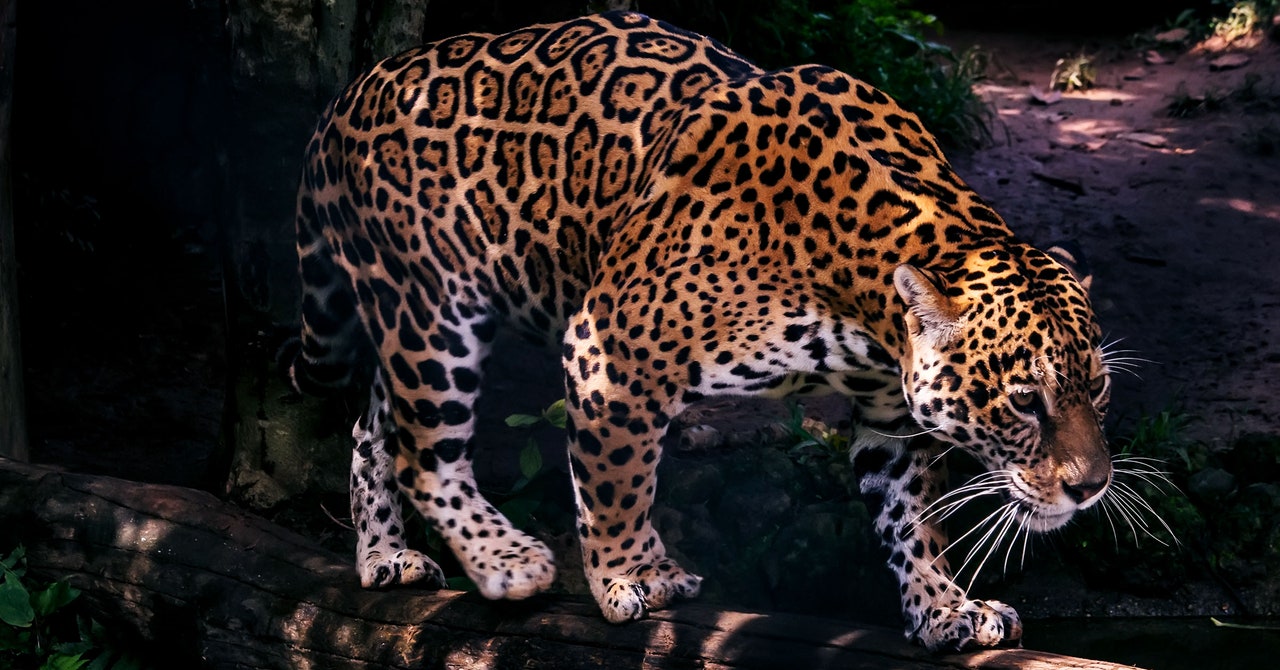
As the region’s apex predator, jaguars keep the ecosystem in balance, say the scientists. “If you remove an apex predator from an environment, you could unleash an explosive mushrooming in the population of other species, which in turn could wreak havoc on the habitat, leading to its complete collapse,” says Zarza Villaneuva.
“By tracking the jaguars, we can prove that they need an enormous space to survive,” Ceballos adds. Safeguarding the jaguars will, he believes, also protect animals further down the food chain. “We need this kind of argument, using a charismatic species, to convince the government to expand the reserve. This is our last chance to save what amounts to an invaluable reservoir of Mexican history and our biological heritage,” he says. About 500 jaguars live in the Calakmul Biosphere, as well as, Ceballos says, nearly 70,000 other species of plants and animals.
Much of that rich flora and fauna could be disrupted by the coming Tren Maya, or Maya Train, which will run through the reserve. The massive infrastructure project, expected to be operational by 2023, will connect Mexico’s poorest and southernmost state of Chiapas with wealthy tourist hubs like Cancún. Work began in 2018 and has been accelerating, and divisive. Some say it will bring much-needed opportunity to remote towns and villages; others warn it is an ecological disaster in the making. Zarza Villanueva says opposition groups, including many indigenous communities, are calling it an “ecocide.” In 2020, a group led by Ernesto Martínez Jiménez, an indigenous activist from Calakmul, won a legal battle to get construction suspended along one portion of the planned line, but it is unclear how long the pause will last.
Back at our camp as night falls and the air is thick with mosquitoes, Campos Hernandez pours me a shot of tequila. “For the bites and the itch,” he says. When I mention the train, he and Ceballos pour themselves another drink. We sit in silence for a long moment, letting the choir of nocturnal insects fill the space between us.
At last, Ceballos speaks. “When the train was first announced … I told government officials that if they touched the biosphere, they’d have to deal with me.” As he and his colleagues learned more about the project, and its inevitability, he says, “instead of throwing our hands in the air and calling it an ecocide, we decided to get involved.” Ceballos and his team began modeling the potential ecological impact, and they petitioned the government to incorporate wildlife crossings into the plans, to allow animals safe passage between both parts of the reserve. Campos Hernandez notes that the Maya Train project will destroy less forest than illegal loggers do each year. He and Ceballos are now hopeful that the project may actually encourage environmentally sustainable development. “Having the military and the government on our side means we can protect the biosphere from illegal logging and potentially expand the reserve,” says Ceballos. He also believes it could give locals an alternative to illegal logging and hunting. He finishes his tequila, and talk of the Maya Train. “And now, I highly suggest everyone gets some sleep, because we’ve got a 4 am wake-up call,” he says.
A few hours later, the alarm, and sounds of howling hounds, jolts me awake. Our caravan of two cars plus a pickup with four expert, jaguar-tracking hounds speeds along a trail through the forest. We reach the pile of fresh meat we left the day before but find no sign of jaguars. As the team searches the area for tracks, Don Pancho tells me to smell the air: There is a musky, barnyard aroma. “Jabali,” he says. “They just passed us, but no jaguar.”


